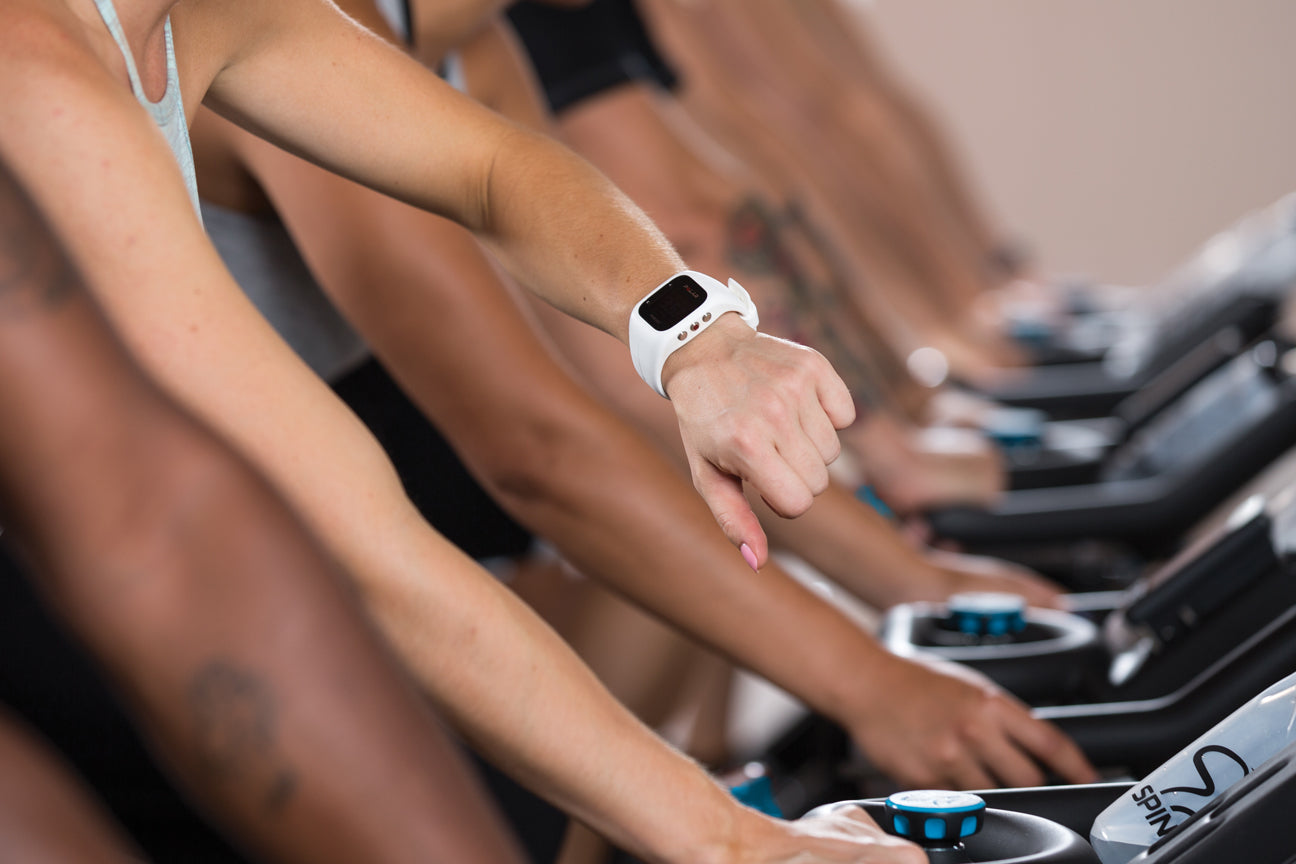Has this happened to you? Have you ever found yourself saying or thinking these exact words? If so, you know how frustrating it can be when you are not able to fully understand or hear the instructor's cues during class. Also, there can even be safety concerns when students cannot understand how to follow along properly.
Gone are the days when group fitness classes were taught without microphones. Today's standards demand the provision of this essential presentation tool, both to protect the vocal anatomy of the instructor and to ensure a safe and pleasant experience for the student. However, as a group fitness professional, this skill can often take a backseat to the more technical aspects of the job. That’s why it’s important to remember that your expertise as a Spinning® instructor is only as valuable as your ability to share your knowledge clearly with your students, a fact that highlights the need for all instructors to learn to master the mic.Let’s further examine the benefits mastering the mic has for both students and instructors:Instructor Benefits
A microphone provides instructors with the ability to increase their volume, so they do not have to yell. The microphone's ability to amplify the instructor’s voice can help protect their vocal cords which are critical for a professional coach because the occupation relies so heavily on verbal communication. The volume amplification is also helpful because it allows the instructor to speak in a normal, conversational tone without putting any additional strain on their vocal cords. The ability to deliver instructions that are conversational and easy to comprehend without putting too much physical strain on your vocal cords is what makes mastering the mic such an essential instructional tool.


Student Benefits
For the student, the primary function the microphone serves is to ensure that verbal cues are both heard and understood at a comfortable level. When you strike an ideal balance between microphone volume and music volume, it provides a more enjoyable experience for the rider. Also, when you consider the learning curve that new students undergo, the ability for them to easily comprehend the instructor’s cues as their bodies are still adapting to the physical demands of Spinning® is integral.Now, let's examine three core variables to improve vocal delivery using the headset microphone:1. Mic Placement
Position the mic at the side of your cheek about two finger-widths away from the corner of your mouth. This will allow the mic to pick up sound clearly, preventing the breathy “Darth Vader” effect caused by the direct line of airflow when the mic is improperly placed in front of the mouth or nose.
2. Enunciation, Tone & Pace
Second, your vocalization (or actual speech quality) impacts microphone clarity. Enunciation, pace and tone all affect how your voice is amplified.
Enunciation is the art of using proper diction to ensure that your students can hear every letter of every word. Make sure to pronounce the beginning, middle and ending of every word.
Pace is how 'quickly' and 'slowly' you speak. Find a pace that allows you to state your words and phrases clearly with natural breathing rhythms. In most cases, instructors find that slowing down even just a little allows students to comprehend cues more easily.
Tone is the distinct pitch of one's voice. Tonal quality through the mic is most effective when it is natural. Use your normal, conversational tone when teaching.
Instructors often have two different voices: their “teaching voice” and their “conversation voice.” There is no need for two voices; be yourself when you teach!
3. Vocal Projection
The third, and perhaps the most important consideration when using a mic is awareness of vocal volume (how loud your voice is) versus vocal projection. High vocal volume is unnecessary; remember that it is the mic’s job to amplify your voice, not yours. So if you scream into the mic, the result can be unpleasant to your riders and can even potentially cause hearing damage. The Centers for Disease Control indicate that hearing loss can occur from frequent exposure to noise at or above 85 decibels or even a one-time exposure at or above 120 decibels. [i]
Rather than screaming into the mic try mastering the vocal projection, a technique where you use your diaphragm muscle to create power in the delivery without excessive volume. Vocal projection creates peaks and valleys in vocal presentation, which allows you to emphasize key cues in each class, such as cues needed to overcome an intense hill. It also allows you to speak softly without compromising the students' ability to hear the coach.
The list of benefits that come from mastering the mic goes on and on! As you hone this skill more and more, you will find additional ways that it can help benefit you and your students!





Leave a comment
This site is protected by hCaptcha and the hCaptcha Privacy Policy and Terms of Service apply.